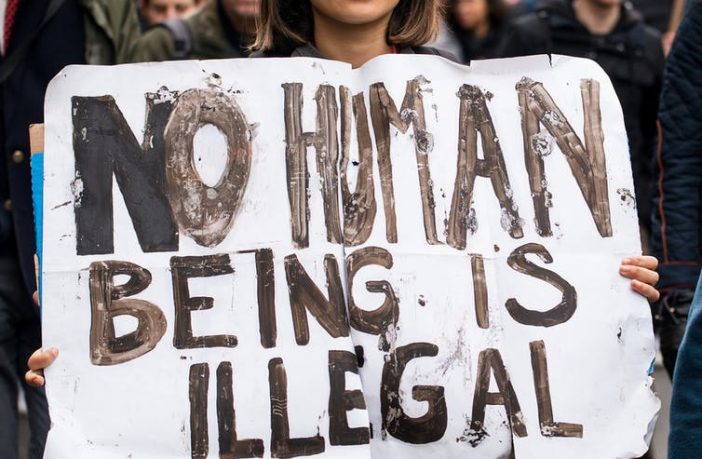Lecturer in Politics and International Studies, The Open University, explores what makes someone an ‘illegal immigrant’?
After months of negotiations and some controversy, a Global Compact for Safe, Orderly and Regular Migration was agreed by 164 countries in early December. In the final text of this agreement and in the process that led up to it, distinguishing between “legal” or “regular” and “illegal” or “irregular” migration was presented as central to a state’s sovereignty.
But what does it mean for a state to identify somebody as an “illegal immigrant” – or even as an “immigrant” at all?
There are a variety of commonly understood reasons why people are identified as “illegal immigrants”. A person may cross a border against the rules of the country they’re entering. Someone may have been living in a country according to its rules until their visa expired, was cancelled, or they could no longer meet its conditions. A person’s status might also change without them knowing – sometimes people are even identified as “illegal immigrants” in their home country.
Forced into irregularity
It’s often assumed that there is a clear line between those who are fleeing persecution, identified as “refugees”, and those identified as “illegal immigrants”.
But in reality, before being recognised as a refugee, most people have had to cross an international border. They may well have been unable to obtain visas to do this and so may have moved irregularly.
Some people have to leave their homes for other reasons, such as the loss of land from rising seas or economic collapse, which means they could not stay put but might not qualify for recognition as refugees under the 1951 Refugee Convention.
People can be forced into being identified as “illegal immigrants” for other reasons. Some visas make one person dependent upon another, for example spousal visas, or those tying one employee to one employer.
If this relationship becomes abusive, a person can feel forced to choose between that relationship and being identified as an “illegal immigrant”. Several countries now provide temporary protective visas in such situations. In addition, administrative errors or status changes by employers or others can change a person’s immigration status.
Read more:
Explainer: the difference between asylum seekers, refugees and economic migrants
Inequality in migration controls
Not all those identified as “illegal immigrants” in a country are subject to migration controls in the same way.
One UK study, for example, found that in the period between 2014 and 2017, men made up 90% of those forcibly removed from the country and 85% of those held in immigration detention.
Meanwhile, government data shows that in 2015, US citizens with expired or cancelled visas made up the largest group of “unlawful non-citizens” in Australia. And yet no US citizens were held in Australian immigration detention.
These data and others imply that the measures taken against those identified as “illegal immigrants” in the countries concerned are not based only on the enforcement of an objective legal framework. This becomes even clearer in situations where citizens are identified as “illegal immigrants”.
Who is a migrant?
In the Global Compact for Migration, “migrant” is not defined explicitly. In the document, “migrant” often seems to refer to someone who has crossed an international border, but sometimes it looks like it refers to someone who is not a citizen of the country where they live.
That these two concepts are not interchangeable can be seen most dramatically in the case of the at least 15m people in the world who have citizenship of no country at all, including the country where they live. Many of these people will have never crossed an international border.
There are also cases where citizens are identified as “illegal immigrants” in their countries of citizenship until they can prove otherwise. Australia’s most famous case is that of Vivian Alvarez Solon, an Australian citizen who was detained and deported to the Philippines in 2001 without her family’s knowledge. She returned in 2005 and was awarded compensation. There are also reports of more recent wrongful immigration detentions of Australian citizens.
In April 2018, the LA Times also revealed that at least 1,480 US citizens had been held in US immigration detention since 2012.
In the UK, in the wake of the “Windrush scandal”, it was revealed that people who had lived in the country in some cases for over half a century were subject to migration control and even deportation. This includes those who entered the country as citizens or who had become citizens.
Since the UK’s 2016 referendum to leave the European Union, citizens of other EU countries who entered the country as part of their free movement rights, and UK citizens in other EU countries, now fear their status in the countries where they live is being redefined without any action on their part.
Read more:
How India is using identity documents to marginalise the weak and poor
While the Global Compact for Migration is non-binding, it offers a statement of internationally negotiated commitments arising from existing human rights treaties. It states that: “Within their sovereign jurisdiction, states may distinguish between regular and irregular migration status.” But this is not the same as deciding who is an immigrant in the first place. The compact doesn’t introduce any “right to migrate” but it also doesn’t remove the need for migration policies that respect existing human rights and are fairly applied.![]()
Tendayi Bloom, Lecturer in Politics and International Studies, The Open University
This article is republished from The Conversation under a Creative Commons license. Read the original article.
Featured image: John Gomez/Shutterstock



